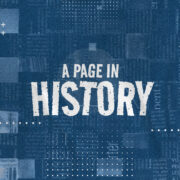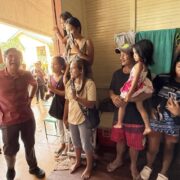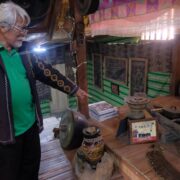Rizal @ 164

I received a lot of birthday greetings yesterday (my birthday is two months away, in August) because it was Jose Rizal’s 164th birthday. Fortunately, nobody sends me similar greetings on Rizal Day, Dec. 30, the commemoration of his martyrdom. “Looking Back,” one of my earliest magazine articles for a national publication, published 40 years ago, was an exposé on fake Rizal drawings floating in the art market. One would think that, having published an M.A. thesis on Rizal, and chapters of a stillborn Ph.D. thesis on Rizal, I have little left to contribute to the literature. On social media, some of my Rizal posts have gone viral in recent years on topics like Rizal’s actual height, scribbled on the flyleaf of one of his notebooks, or the fragments of Rizal’s brain (actually, I think pieces of his cranium or skull) that were lying in plain sight in the Ateneo Archives, if one requested to see it.
I was an undergraduate student when I first stepped into the National Archives of the Philippines over four decades ago. I had no research agenda; I was just curious to check it out. On the walls were bound volumes of photocopied documents listed as “Ereccion de Pueblos” for those interested in local history and the foundation of towns in the Spanish period and “Sediciones y Rebelliones,” which needs no English translation. As I wanted to see and handle an original archival document, I was handed an application form and a grimy folder with a list of “legajos” or bundles of archival documents. These were roughly classified by topics and arranged alphabetically. Offhand, I remember the bundles that caught my eye: Abortos (Abortion), Censura (Censorship), Divorcio (Divorce), Extranjeros (Foreigners), Fiestas y Festejos (Feasts and Festivals), Monumentos (Monuments), and many more.
On my first visit, I requested something simple—”Rizal.” Twiddling my thumbs, waiting for the bundle to be located on the eighth-floor bodega and delivered to the reading room on the first floor, a man who identified himself as a researcher for the National Historical Institute sat beside me and asked, “Why did you request the Rizal bundle?” He then gave me, a novice, some unsolicited advice: “Why don’t you find another topic? Something that hasn’t been worked on yet.” Then he sneered: “Rizal? Gasgas na yan.” For added emphasis, he repeated, “Gasgas na gasgas na yan!” I stood my ground because he embarrassed me in front of the other researchers, had he been my age or younger I would have replied “Ano ba pakialam mo? (My request is none of your business.)”
When my bundle, wrapped in thick Manila paper arrived, it was so small compared to the bundles everyone else was working on. I carefully untied the knot on the straw that held the bundle together and opened the Manila paper. On top was a document signed by James Alexander Robertson ordering the transfer of all Rizal manuscripts from the archives to the National Library.
Before I closed the bundle and planned a visit to the library, I went through the remainder of the “Rizal” bundle and found part of the correspondence of Rizal’s sisters. These were not considered significant enough to merit transfer to the library, because there was nothing on Rizal in them. However, browsing through each document till the bottom of the pile, I got a sense of the household where Rizal grew up. Remember, he was educated by a strong mother, Teodora Alonso, and definitely formed by his nine sisters: Saturnina (Neneng), Narcisa (Sisa), Olympia (Ypia), Lucia, Maria, Concepcion (Concha), Josefa (Panggoy), Trinidad (Trining), and Soledad (Choleng).
In these letters and those that would turn up in later research, we know that Rizal was not the only one who placed bets on the lottery. In the letters of the sisters, we have many random numbers that could’ve been the tickets they bought or the numbers they sought out. I should return to these, copy them, and try them out in lotto. After all, Rizal regularly bought one-tenth of a lottery ticket when he was a student in Madrid, but it was not until he was deported to Dapitan that he struck gold—a second-prize jackpot shared with two other people, one of them his “jailer,” the governor of Dapitan!
Scholars rely on Rizal’s correspondence, compiled first in 1938, and again in 1961, with close to a thousand letters published in eight volumes classified into letters to: family members, colleagues in the propaganda, Ferdinand Blumentritt, and “others.” One would think these to be “complete,” but in recent years unpublished letters have turned up in: Manila, Berlin, Graz, Budweis, and the most recent being one shown to me in Vienna by a descendant of Ferdinand Blumentritt last month. I believe that more unpublished and unknown Rizal manuscripts and materials will turn up in the future, some lured out of hiding by the high prices paid for them at auction.
I am glad I was not discouraged by my first visit to the archives, where I was told that Rizal was “gasgas” or worn out. It seems I will never retire from studying Rizal as new material crops up. Forty years since I began researching Rizal, it remains relevant in our times and significant to me.
—————-
Comments are welcome at aocampo@ateneo.edu
Ambeth is a Public Historian whose research covers 19th century Philippines: its art, culture, and the people who figure in the birth of the nation. Professor and former Chair, Department of History, Ateneo de Manila University, he writes a widely-read editorial page column for the Philippine Daily Inquirer, and has published over 30 books—the most recent being: Martial Law: Looking Back 15 (Anvil, 2021) and Yaman: History and Heritage in Philippine Money (Bangko Sentral ng Pilipinas, 2021).





















Elements that foster violence